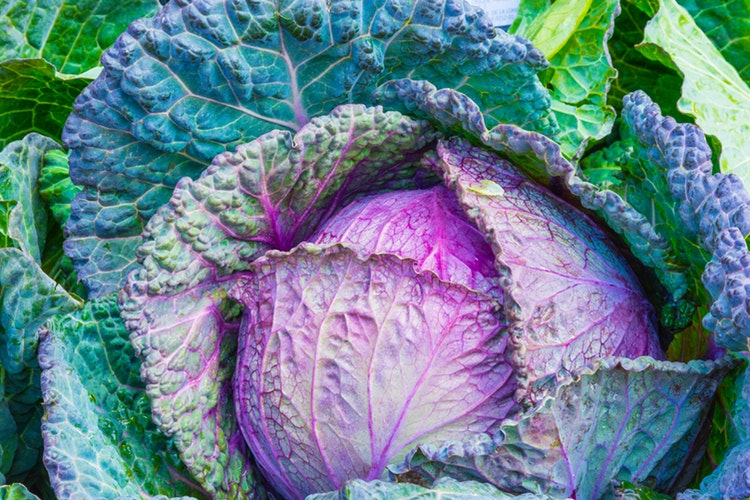Home > Lifestyle > Eats & Drinks > What’s in Season: Cabbage
What’s in Season: Cabbage
Like most unsung heroes, cabbage has long been underestimated. Fermented cabbage, or sauerkraut, was eaten by sailors in the 17th and 18th centuries to prevent scurvy on long voyages. Romans and Egyptians also heralded the medicinal properties of cabbage, using it to dress battle wounds.
Benefits of Cabbage
Through the miracle of modern medicine, scurvy is no longer the scourge of the sea, and we prefer to wrap our injuries in gauze rather than leafy greens. Despite this, cabbage still offers many nutritional advantages.
- As a cold-weather crop, this vegetable is an ideal way to get the vitamin C your body needs to boost the immune system in winter.
- Digestive fiber helps keep you running efficiently while detoxifying your system.
- Sulforaphane, a chemical found in cabbage, broccoli and other related vegetables, reduces the risk of rectal, prostate, breast, lung, stomach and colon cancer.
- Cabbage is, as the Romans suspected, anti-inflammatory. You can apply it to scrapes, cuts or scars to alleviate pain and infection.
Cabbage Production
- These succulent spheres are best from late fall to early spring and make the perfect addition to any winter meal.
- Cabbage can grow in all 50 states, but it flourishes in New York, California, Texas and Wisconsin. You can start cabbage from seeds indoors and transplant it in early spring. Alternatively, you can plant it from seeds for fall.
- Seeds should be placed 15 to 18 inches apart and fertilized.
- Cabbage prefers moist (but not soggy) conditions.
- It can take 70 to 100 days for a full head of cabbage to develop.
- Harvest cabbage when the head is completely firm.
- Avoid picking split or damaged heads.
- To harvest, cut the stalk at the lowest point possible, leaving the outer leaves intact.
- Raw cabbage can be refrigerated in plastic wrap or Tupperware for weeks.
- To store for months, blanch cabbage in boiling water and place in an airtight plastic bag in the freezer.
Choosing Cabbage
While there are many different shapes, colors and sizes, there are a few common cabbage varieties grown in the U.S:
- Green Cabbage – Smooth, green leaves
- Red Cabbage – Smooth reddish leaves, has a high level of vitamins A and C
- Savoy Cabbage – Crinkled, dark leaves
Cabbage Preparation
Throughout history, cabbage has been a staple in many different cultures. There are numerous ways to prepare this versatile vegetable.
- Roast, sauté, boil, steam or even fry your cabbage.
- Cabbage can be fermented into sauerkraut or shredded for coleslaw.
- For a nice crunch, add cabbage to your dish as a garnish.
- Avoid overcooking, lest you destroy the numerous health benefits of eating cabbage.
SEE MORE: What’s in Season: Spinach
Cabbage Recipes
You can use cabbage in a variety of fresh, crisp recipes or in warming comfort food dishes. Try cabbage in a few of our favorite delicious recipes below:











[…] Cabbages are generally available year-round but are most flavorful around fall and winter. […]